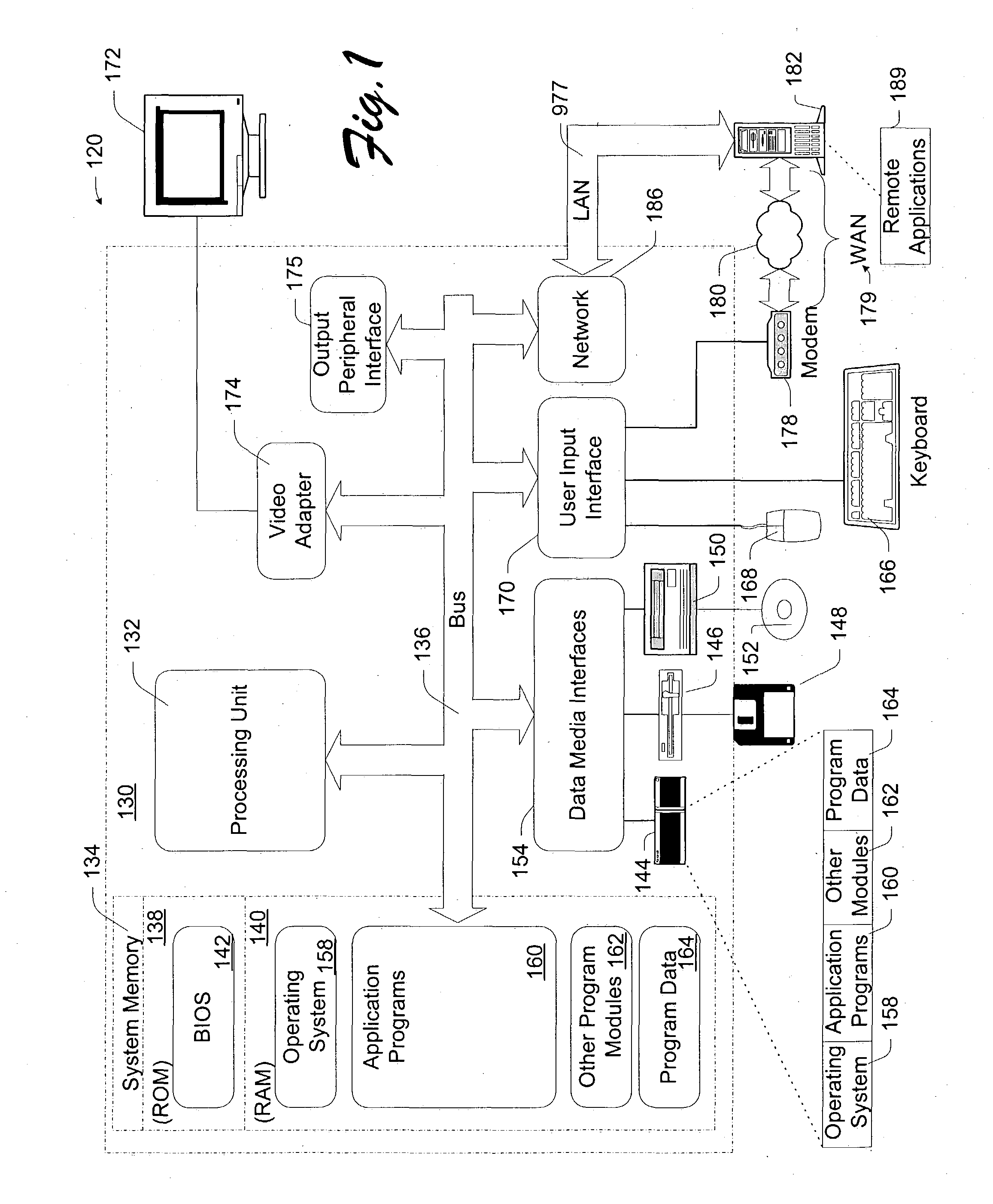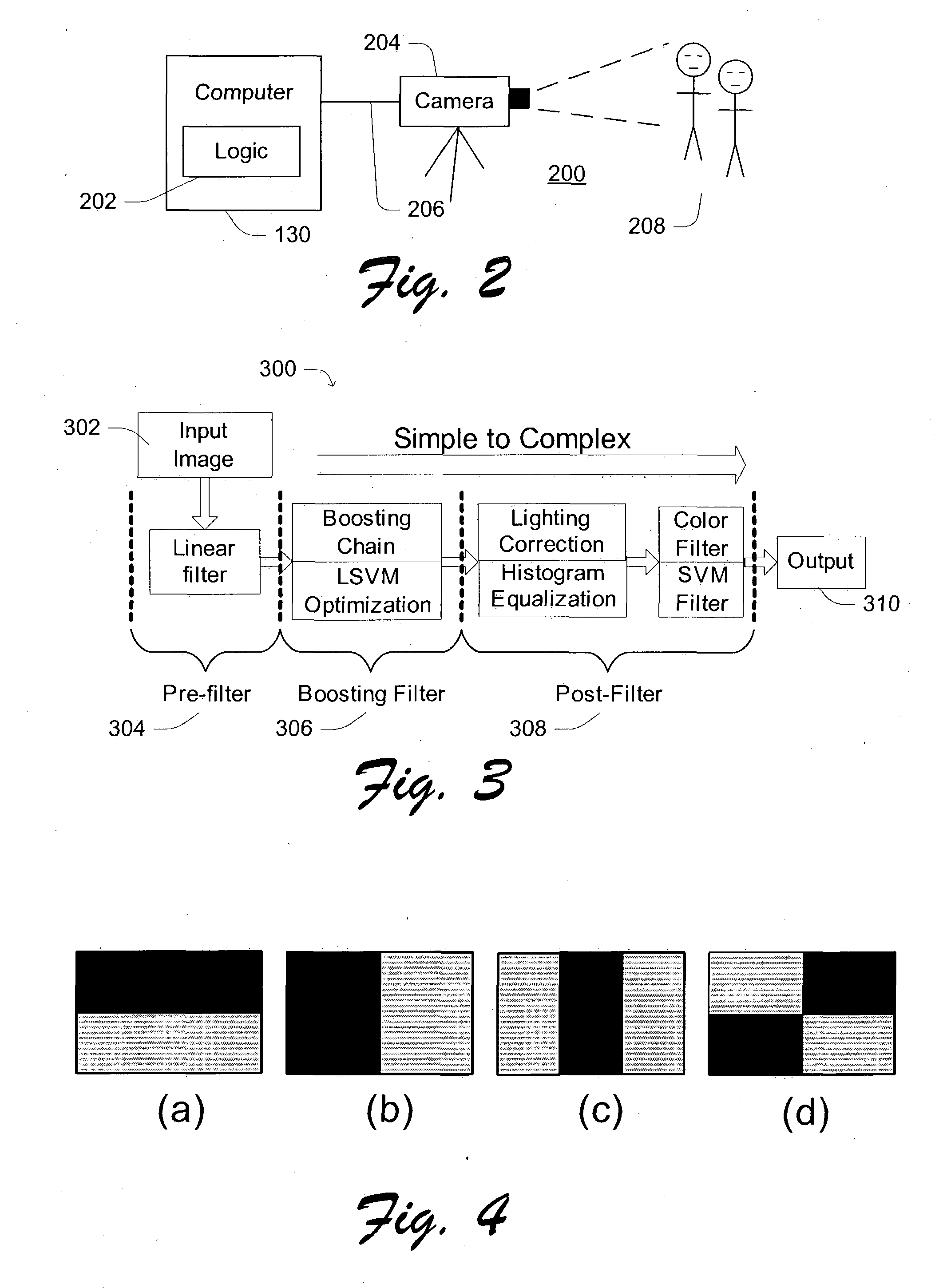Robust multi-view face detection methods and apparatuses
a multi-view, face detection technology, applied can solve the problems of complex distribution of face data, difficult human face detection in the field of computer/machine vision, and complex distribution of human face data in feature space,
- Summary
- Abstract
- Description
- Claims
- Application Information
AI Technical Summary
Benefits of technology
Problems solved by technology
Method used
Image
Examples
Embodiment Construction
Exemplary Computing Environment
FIG. 1 illustrates an example of a suitable computing environment 120 on which the subsequently described methods and arrangements may be implemented.
Exemplary computing environment 120 is only one example of a suitable computing environment and is not intended to suggest any limitation as to the scope of use or functionality of the improved methods and arrangements described herein. Neither should computing environment 120 be interpreted as having any dependency or requirement relating to any one or combination of components illustrated in computing environment 120.
The improved methods and arrangements herein are operational with numerous other general purpose or special purpose computing system environments or configurations.
As shown in FIG. 1, computing environment 120 includes a general-purpose computing device in the form of a computer 130. The components of computer 130 may include one or more processors or processing units 132, a system ...
PUM
 Login to View More
Login to View More Abstract
Description
Claims
Application Information
 Login to View More
Login to View More - R&D
- Intellectual Property
- Life Sciences
- Materials
- Tech Scout
- Unparalleled Data Quality
- Higher Quality Content
- 60% Fewer Hallucinations
Browse by: Latest US Patents, China's latest patents, Technical Efficacy Thesaurus, Application Domain, Technology Topic, Popular Technical Reports.
© 2025 PatSnap. All rights reserved.Legal|Privacy policy|Modern Slavery Act Transparency Statement|Sitemap|About US| Contact US: help@patsnap.com



